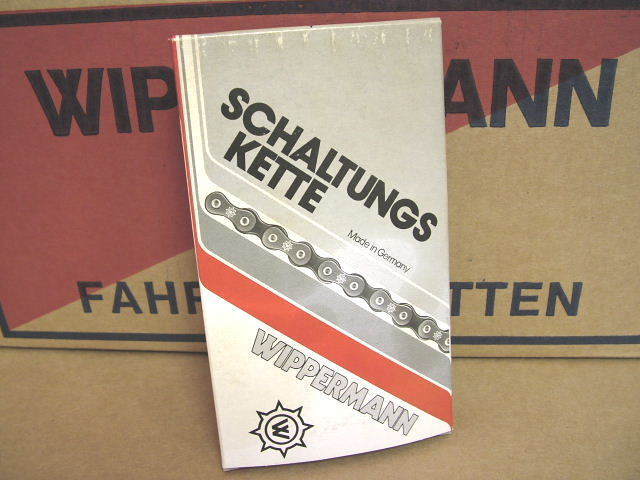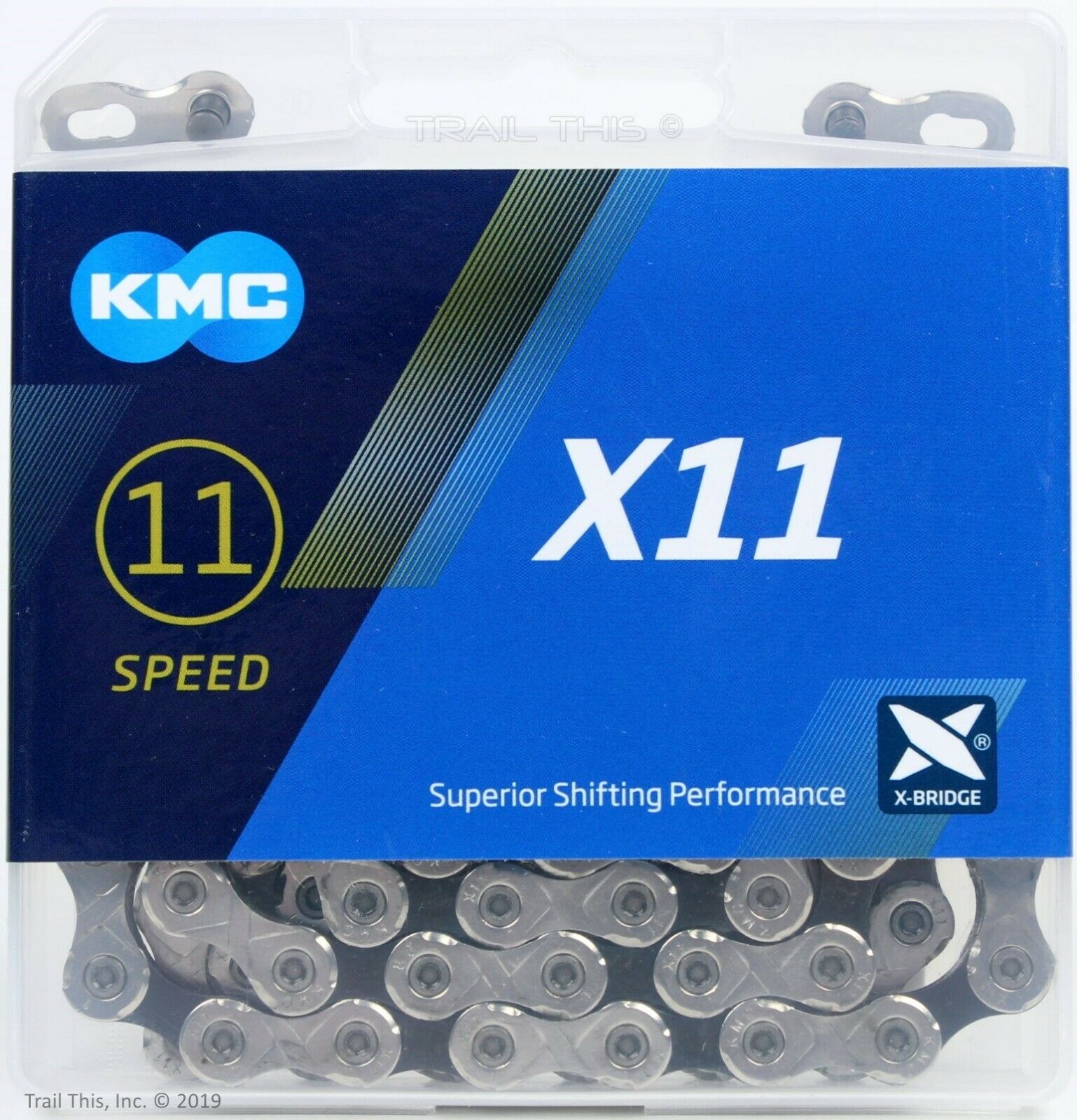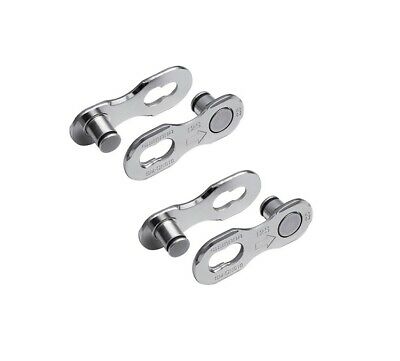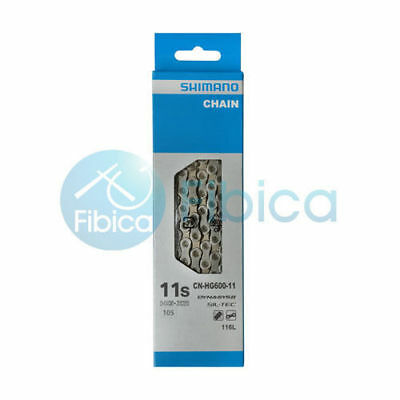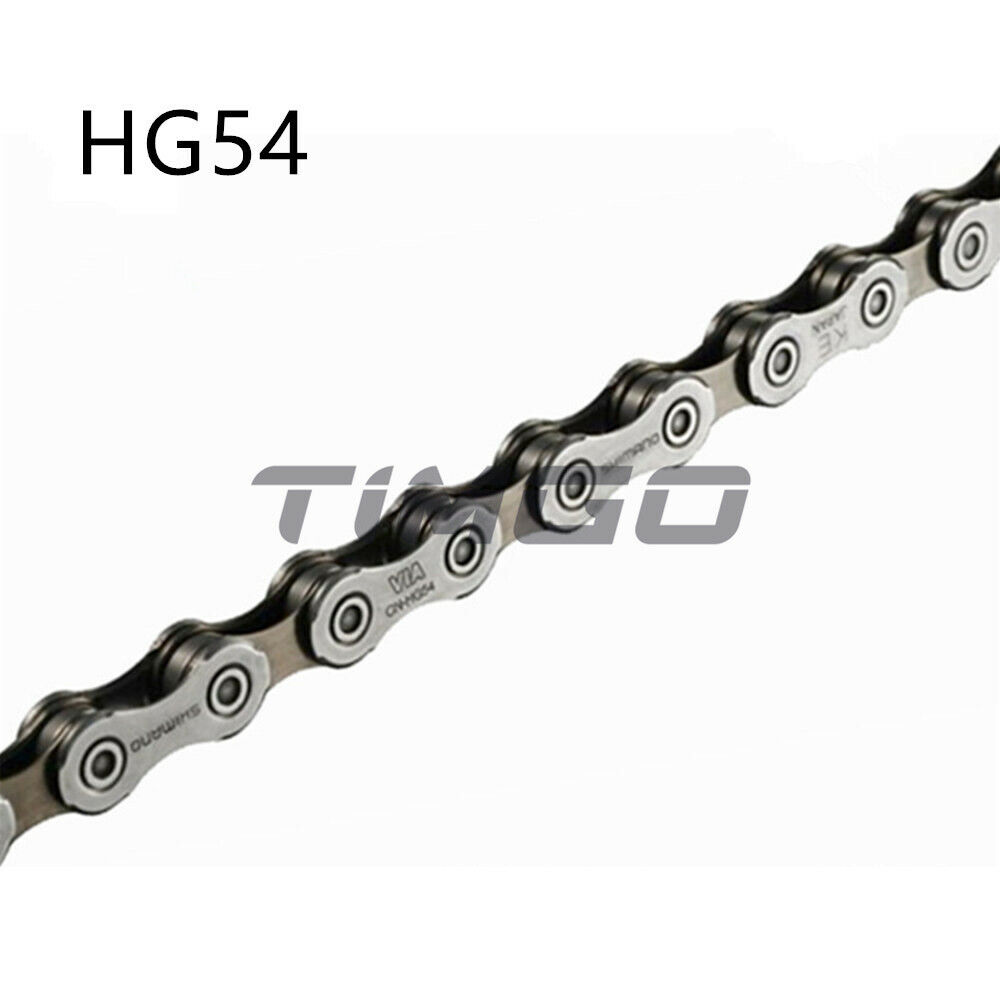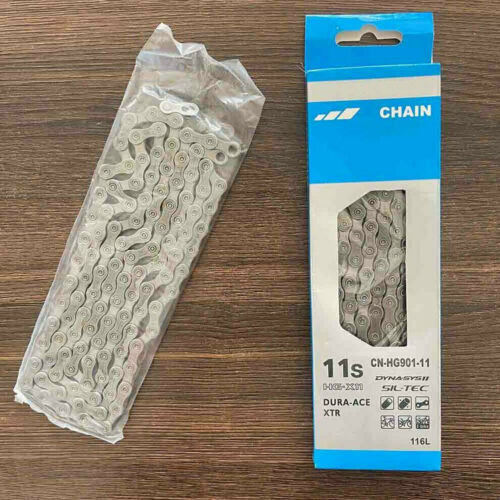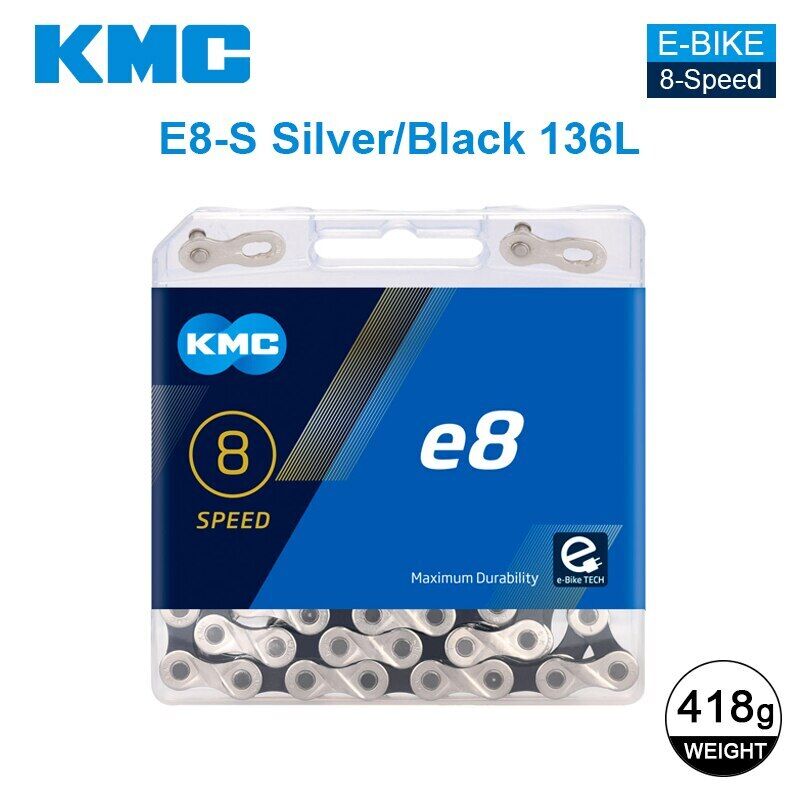-40%
New Old Stock Wippermann Chain (1/2" x 3/32") w/116 Links...Made in Germany
$ 13.19
- Description
- Size Guide
Description
One (1) New-Old-Stock Wippermann Chain (1/2" x 3/32") - Nice 5/6 Speed Replacement Chain w/116 LinksThank you for your interest in this item and please visit our store for other offerings. We have very reasonable shipping terms and combine orders to save money (for customers) on shipping costs. We also maintain customer friendly return/refund/exchange policies.
Product Description:
Listing Update...We are getting some questions about the compatibility of these chains with those in-between 7/8 speed drivetrains where the spacing is narrower than 5/6 speed drivetrains, but still wider then newer stock 9/10 speed drivetrains. Our response is that we are comfortable recommending these chains for 5/6 speed drivetrains...just to be safe. We say this after having done some additional research (and after taking some additional caliper measurements). As a result of these efforts, we noted these new-old-stock Wippermann chains measure every bit of 7.5 mm wide, whereas the SRAM and Shimano 7/8 speed chains measure 7.1 mm and 7.4 mm, respectively (and every 9/10 speed chain we have come across measures less than 7.0 mm). We understand the measurements are fairly close, but since there are decent SRAM and Shimano 7/8 speed chain models out there that can be purchased for about the same price as these vintage Wippermann chains, we would recommend going with one of those narrower chains for 7/8 speed drivetrains. You are still welcome to try one of these chains on these slightly narrower 7/8 speed drivetrains...and we know some customers have done this with success...but since these Wippermann chains are a little wider, we still feel more comfortable with our 5/6 speed recommendation.
Original listing...
This offering is for a new-old-stock (NOS) Wippermann chain from probably the 80's. We've been looking for a good quality wider chain for all of the vintage 5/6 speed drivetrains still out there...and we've found them (in this German-made offering). These chains came to us still in their original sealed crates (and individually boxed within these crates...with the old wax paper, etc...just as pictured to the left). As a result, they are factory new...even though they have probably been sitting in a warehouse over in Europe for 25+ years.
Please do note they are derailleur spec'd chains that incorporate the old bushing design (see discussion below for bushing vs. bushingless chain design/construction). Other specifications include a scale weight of 394 grams, a total of 116 links and the relatively standard internal link measurement of 1/2" x 3/32", but they still measure wider (outside width) than many of today's chains, as they have wider and heavier plates. These characteristics are what make these chains a good replacement option for vintage drivetrains with the wider spaced 5/6 speed freewheels. These heavier component pieces should result in a longer wearing chain that holds up a little better relative to many of today's narrower chain offerings. This is not to say that today's chains are inferior, as they are not...but today's chains have to be made with lighter and thinner component pieces in order to shift properly on today's 9/10 speed cassettes (which are much more narrowly spaced relative to old-stock 5/6 speed freewheels).
We do want to emphasize that although we mention these chains should hold up a little better relative to current chain offerings, they are still a wider chain, which means they will most likely not shift properly on today's narrower (9/10 speed) drivetrains...so we would recommend staying with today's narrower chain offerings for those applications. However, for the vintage 5/6 speed drivetrains from the 80's and before, this chain is a very good option for all the reasons noted above.
Please also note from the pictures these chains appear to have a dull gray/nickel finish and the brown that you see is not rust...but the original oil coated on these chains from the factory. So the condition of these chains is new-old-stock and each one is wrapped in wax paper and enclosed in a factory labeled cardboard box (just as pictured).
A note about bushing vs. bushingless chain design/construction...
As we understand it, the bushing chain design represents the
original
construction technique by which all bicycle chains were assembled. This approach includes the use of bushings (i.e., something that looks like a hollow rivet) that hold inner plates together and allow link pins to pass through...connecting inner plates to outer plates...to ultimately construct the chain. These bushings are not visible once the link pins are in place, as the outer plates cover the inner plates around the area where the bushings are located. Although, a quick glance at chain ends (prior to chain installation), and specifically the visible inner link plates, should allow for a relatively easy chain identification. More specifically, the bushing design with the hollow-like rivets will show themselves as thin rings connecting inner plates and covered by rollers.
In contrast (and as the name suggests), the bushingless chain design eliminates the bushing from the construction process. This is how most newer chains are mass produced, as this appears to be today's preferred method of construction, especially for indexing drivetrains. So instead of a bushing that holds inner plates together, the inner plates themselves have been re-designed to include an added cylinder shaped section that extends half the length of the inner chain width (or half the length of the old bushing). It's these two cylinder shaped "halves" of the inner plates that meet in the middle to eliminate the need for bushings. The link pins and rollers are still present under both chain designs, but the bushings are eliminated here, given the aforementioned advancements in inner plate design. So to view the chain ends of a bushingless chain, and specifically inner plate ends prior to chain installation, you will not see a bushing-like ring...and this is the "tell-tale" for bushingless chain identification.
Now having said all of this, I've alluded to some preferences/benefits of the bushingless chain, but let me share a few other thoughts after discussing this topic further with some informed colleagues. As it relates to bushing constructed chains, there is the prevailing thought that these chains tend to exhibit more lateral stiffness, which means each shift will have to be precise, but this also means there will be less lateral "play" or "flex" in these chains. The reason for the stiffness is the one-piece (but hollow) bushing that connects the inner plates. On the other hand, the bushingless chain replaces the bushing with an advanced two-part inner plate design that exhibits a bit more lateral flexibility. It's this lateral flex that appears to benefit the indexing drivetrains and one of the reasons why the bushingless chain has gained more popularity in recent years. In the end, both chains probably have their own redeeming qualities and both designs will function on friction-based or indexing drivetrains, but there are still differences to be noted (and hopefully this discussion is helpful in shedding some light on these differences).
Terms and Conditions:
You may visit our store by clicking on this
"Store Home Page"
link and please note the product categories on the left side of our
"Store Home Page"
.
We have also moved our
"Terms and Conditions"
to a separate page within our Ebay store. You may navigate to this page by clicking on the link on the left side of our
"Store Home Page"
(below the product categories) or you may click on one of our
"Terms and Conditions"
direct links herein.
Note to international customers regarding shipping...
We apologize to those that feel some of our international shipping charges are too high. We only charge actual shipping rates, but once an order exceeds a certain amount, we hesitate to use the least expensive US Postal Services First Class International service. We feel this way, because this service is not trackable or insurable...so more risk of loss. We prefer the US Postal Services Priority Mail International service for more expensive orders, because this service is trackable at USPS.com and insurable...so less risk of loss. Unfortunately, this service is more expensive, especially for smaller/lighter packages, relative to the First Class International service. We are sorry about these higher shipping costs, but hopefully our notes help to explain why this is the case.
Note to international customers regarding customs...
We also apologize to those that feel their country import taxes, duties and brokerage fees are excessive. As a small US business, we are required by customs' laws to declare each order as a retail sale. Additionally, the declared order value must be equal to total store purchases and/or winning auction bids (less any shipping costs, as these are not considered in the declared value). As a result, each customer will be responsible for paying his/her own country taxes, duties and brokerage fees, which will be collected upon delivery. Again, we apologize for these additional costs, but we cannot afford the penalties and fines that come with breaking customs' laws...so we have to strictly abide by them.
